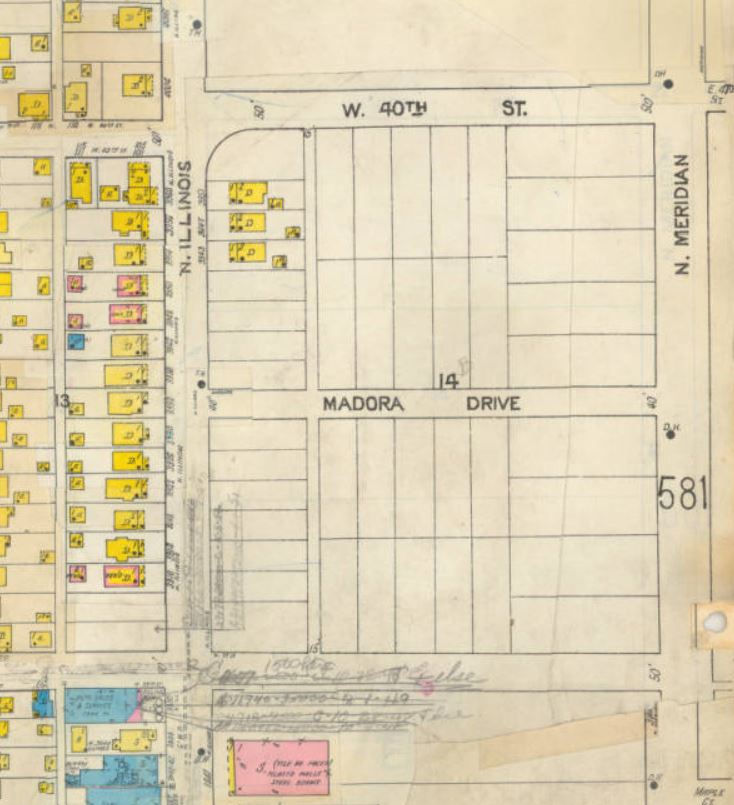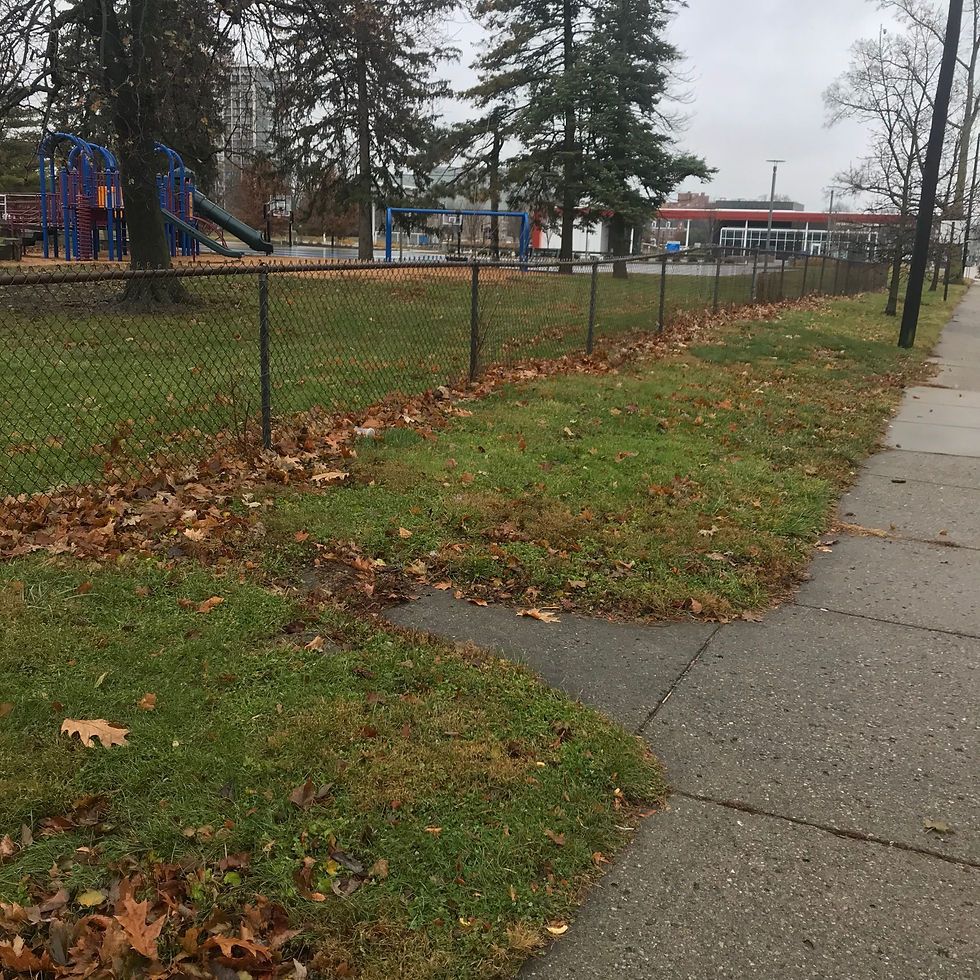From Madora Square to Tarkington Park: The Founding of an Indianapolis Landmark
- Ed Fujawa
- Nov 30, 2019
- 5 min read
Updated: May 2, 2022

As has been mentioned before, many of the posts on this site do double duty as articles in the Butler Tarkington neighborhood newsletter. Thus, the frequency of Butler Tarkington centric articles, and this post is no exception, and will appear in the upcoming BT newsletter. A post from several months ago discussed the history behind another of Butler Tarkington’s parks: Ramsey Park, located near the intersection of 42nd and Boulevard. But the most prominent park in the neighborhood is Tarkington Park, a landmark not only for the neighborhood, but for the city of Indianapolis as a whole. Much has been written about this park (check out a post from Historic Indianapolis on Tarkington Park here), and it has continues to be a neighborhood attraction.
As most know, the park’s eventual namesake was author Booth Tarkington, whose home was at 4270 N. Meridian Street from 1923 until his death. But a park wasn't always the plan for the property prior to it finally being created in the waning days of World War II.

Following the establishment of the Indianapolis, the land which is now Tarkington Park was owned by several early settlers, before the land was acquired by Fred Topp, a German born gardener who had emigrated to Indianapolis as a child in 1848. While he lived farther south near 30th and Illinois, he owned the Tarkington Park property for agricultural use in the latter part of the 19th century. Following his death in 1906, the property stayed with the Topp family until they divested their interest in the 1920’s.

Following the exit of the Topp family, the land was subdivided into residential lots and was named “Madora Square,” with a right of way for an extension of 39th Street between Illinois and Meridian as the southern boundary of the property.

In 1945 the Indianapolis Park Commission sought to acquire the Madora Square property, which consisted of 42 residential lots, for the purpose of use as a park. During a March 8, 1945 Commission meeting, petitions in support and against the park were heard, with some remonstrators complaining about the potential noise from a park. Despite the limited opposition, the Parks Commission voted unanimously to purchase the ‘Madora Park’ as it was occassionally being called. The purchase was to be funded through a bond issue in the amount of $68,000, and at that time, the land was owned by Ms. Mary Ann Tall Jefferson.
In April, an Edward Snethen, a local attorney, and representative of a group of nearby residents, petitioned the Parks Commission to name proposed Madora Park after Booth Tarkington. Snethen was also a trustee at the North United Methodist Church, which was located adjacent to the park, and whose congregation and board of trustees had also supported the Tarkington name. Additional discussions about the potential renaming continued over the summer, and the proposal received positive feedback from those with the city, and local residents.
In a July 4, 1945 Indianapolis Star article, Snethen explained that the church had supported the Tarkington name “because Mr. Tarkington’s ancestors originally acquired the land and held it for many years,” and because the author was “one of the city’s truly great citizens.” On July 6, the Park Commission approved the Tarkington Park name, but the formal naming was delayed until the necessary bonds could be sold to fund the sale of the Madora addition. On September 6, 1945, the Parks Commission officially named the Madora property Tarkington Park.

City officials planned to hold a formal dedication of the park for the next spring when Booth Tarkington, who was staying in his summer home in Kennebunkport, Maine at the time of the formal naming, would be in town to attend the festivities. The dedication was tentatively set for summer of 1946.

Unfortunately, Tarkington died on May 19, 1946 in Indianapolis. While he likely passed the by the park which bore his name prior to his death, it does not appear Tarkington ever took part in any dedication ceremony, although he found some humor in the naming of the park after him. On May 21, 1946, the Indianapolis Star ran an article detailing a letter received by a local business executive, not long after the naming of the park after Tarkington was proposed. In the letter, Tarkington rhetorically asked “Who am I to disapprove the name of a park for me? I shall hope the disapprovers won’t be many and I shall refrain from encouraging them, though should they triumph over you and my other ‘well-wishers,’ I shall be philosophical, remembering another occasion long ago when it was proposed to name a street out in Irvington ‘Tarkington Street.’ Matters of length and spelling and pronunciation were tactfully blamed for the defeat of that proposal.”
Early on, Tarkington Park consisted of a playground, and baseball and football fields, along with abundant greenspace. A tennis center was proposed in the 1950’s, although it, and the accompanying tennis courts weren’t completed until around 1960. The tennis courts remain although the tennis center itself was demolished around 2011.

In the northwest corner of the park, three private residences had been built near the intersection of 40th and Illinois Streets (as seen in the maps above), and had pre-dated Tarkington Park, and remained even after the park was established. These homes were eventually demolished in the mid-1970’s although signs of the front walkways for these homes can still be seen on the sidewalk just before the stop sign at 40th Street (photo to the right).
Within a few months of receiving the Tarkington name, controversy swirled when a proposal was submitted to build a car dealership on the northwest corner of 39th and Illinois Streets. Local residents opposed the commercial enterprise, as did the Park Board, which had sway over property adjacent to Tarkington Park. While initially this action was prevented, eventually a dealership was constructed at the site in the late 1940’s. The building still stands and was most recently occupied by Happy Brewing.
In early 1946, recently returned veterans who were students at a nearby chiropractic college sought to use Tarkington Park as a trailer park to solve their post-war housing woes. However, Paul V. Brown, superintendent of the park commission, questioned the legality of using a public space to support a private enterprise (the chiropractic college), and the city worked with the college to locate other housing options.

In 1955 there were suggestions by local real estate investors and some with the city that Tarkington Park be sold. In March of that year, then Mayor Alex Clark addressed these proposed plans by noting that “[i]t will not be old during this administration. We had many real state people suggest that we sell the park for commercial purposes. I’m against it.” Later, in 1957 there were rumors that the city intended to again sell Tarkington Park, after a report in the Indianapolis News indicated that a 100-space parking lot was intended for the property. Despite these rumors, no such action was taken, and the former Madora Square has remained Tarkington Park.
References
Indianapolis Sanborn Map and Baist Atlas Collection: Sanborn 1941, Baist 1929
Indianapolis Park Commission Minutes, 1945 and 1955
Indianapolis Star, September 21, 1921, August 13, 1947, May 21, 1946, April 20, 1945
Indianapolis News, August 30, 1955, November 22, 1955, August 31, 1945, July 4, 1945



Comments